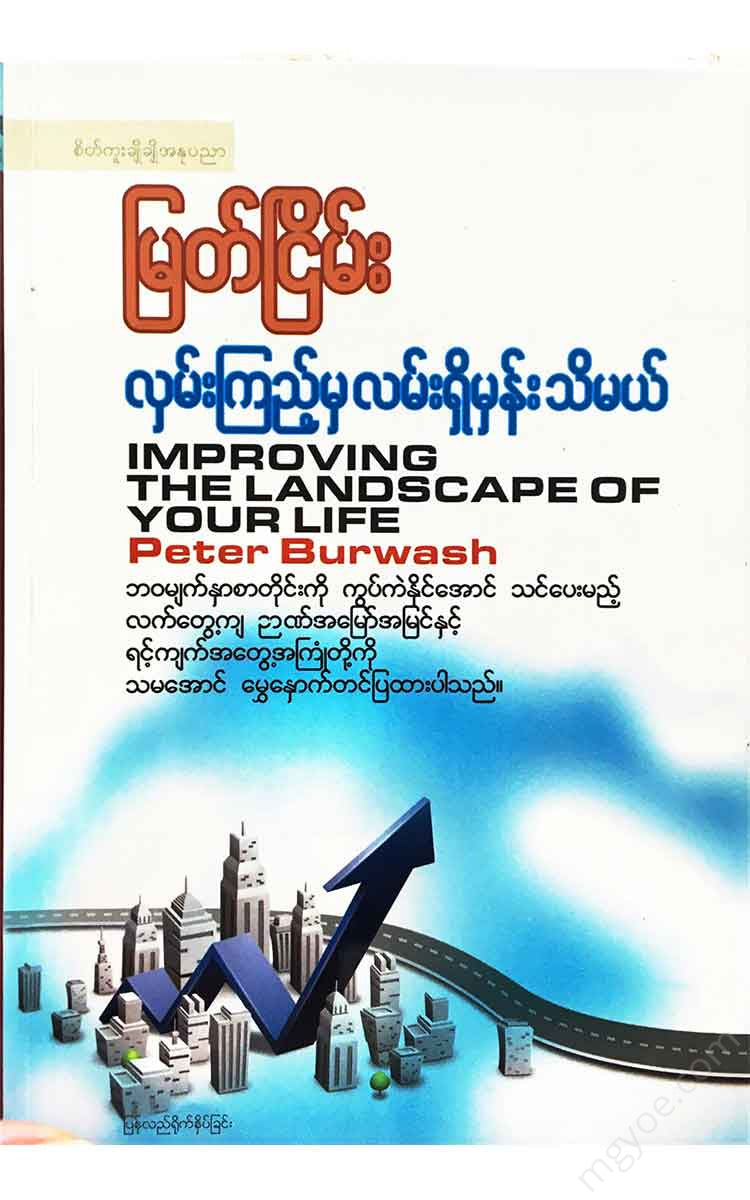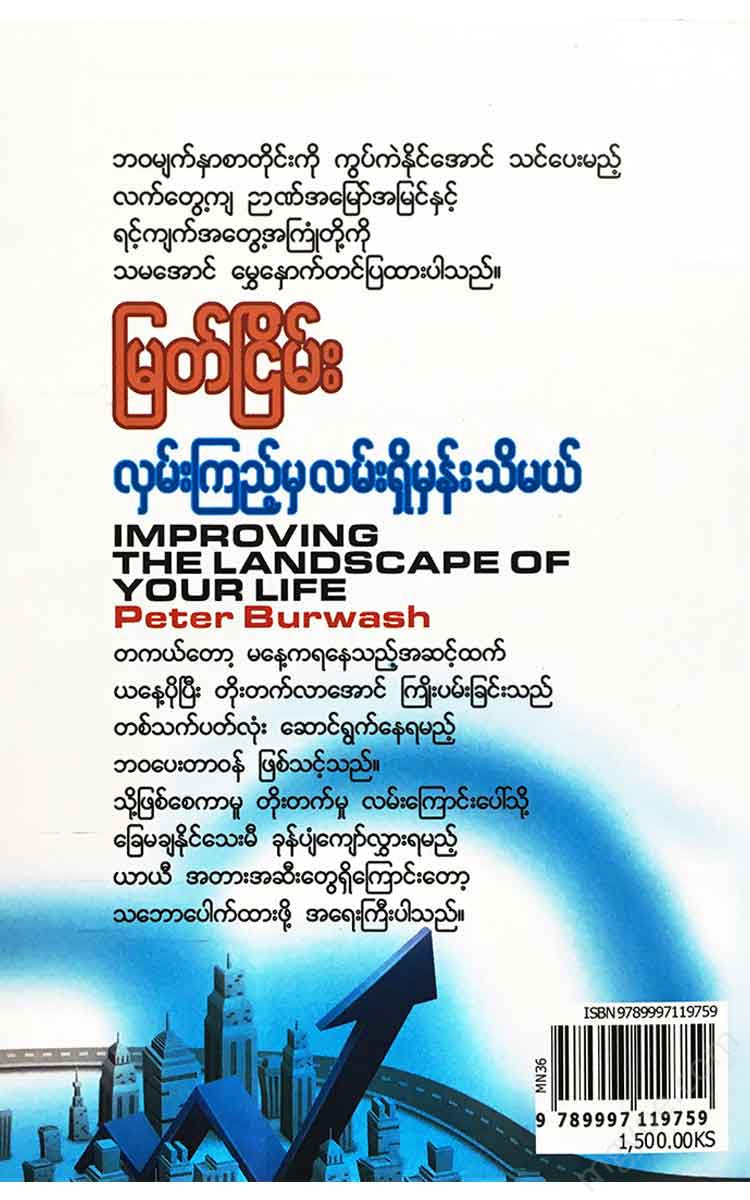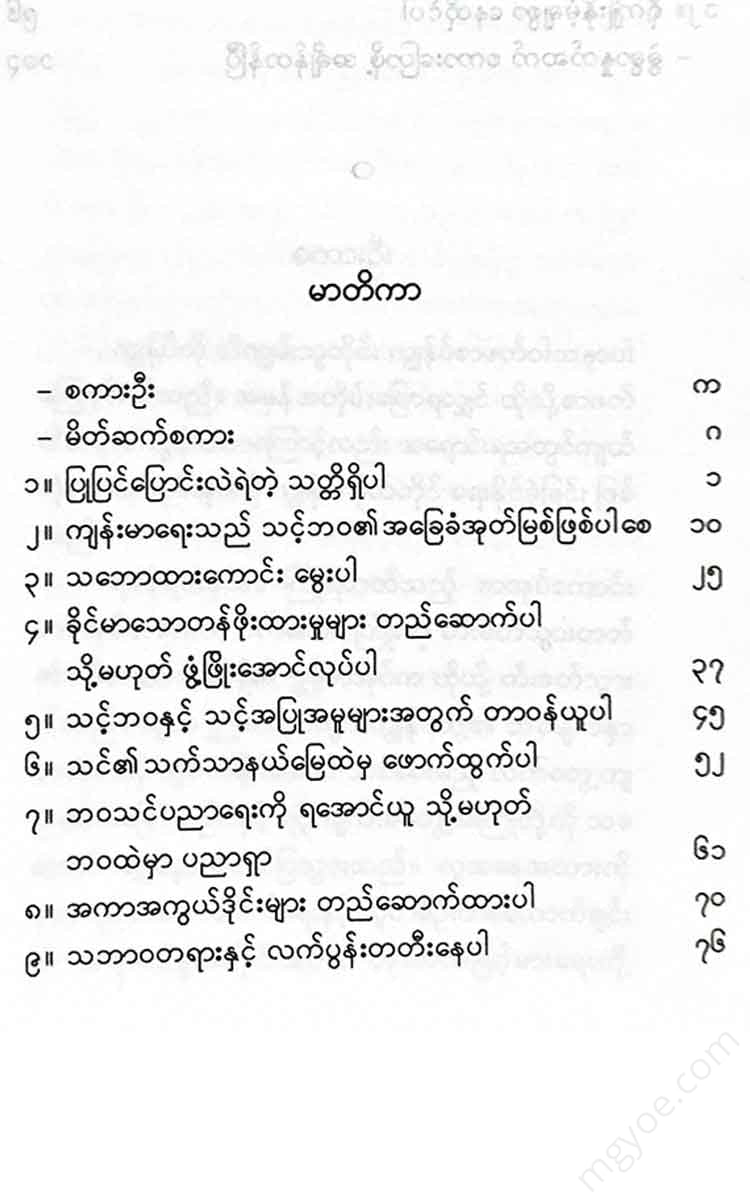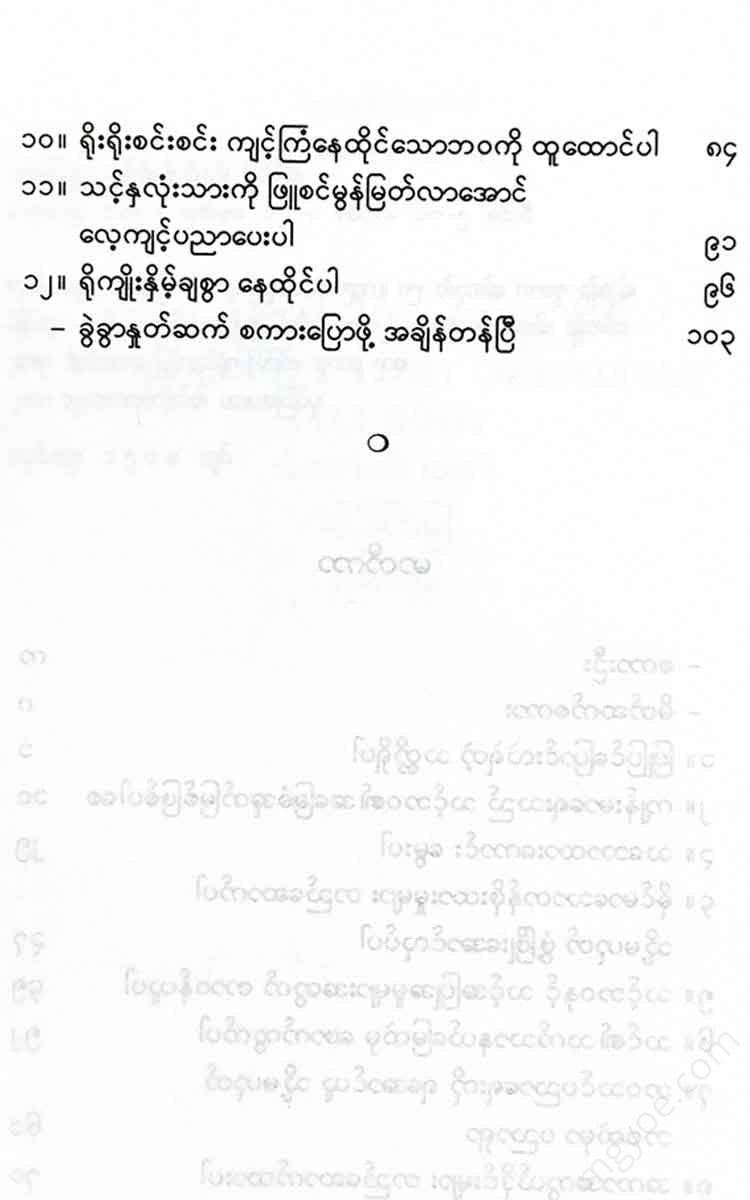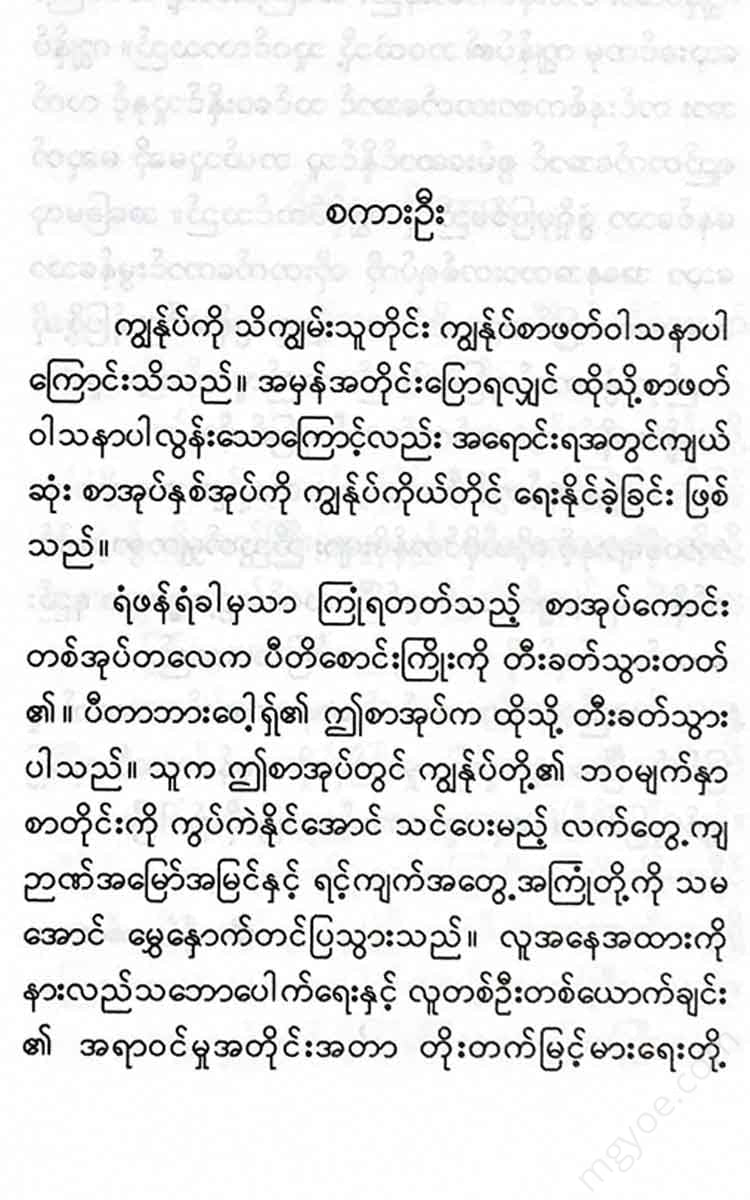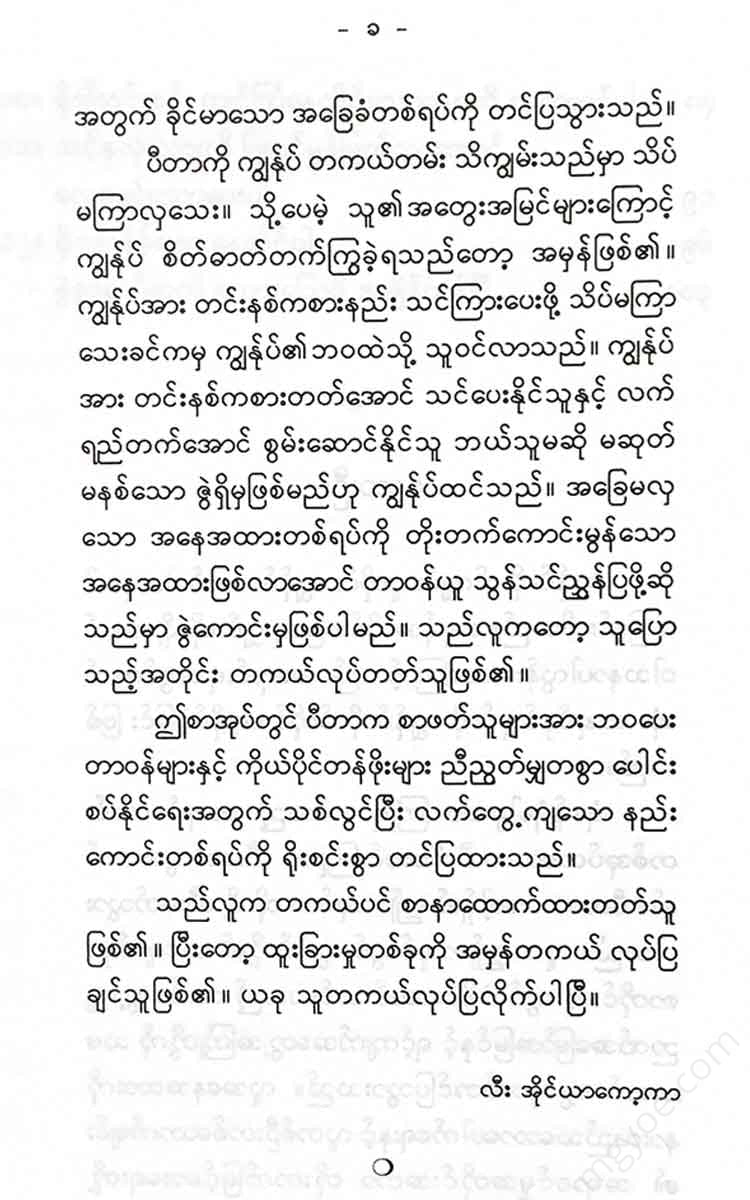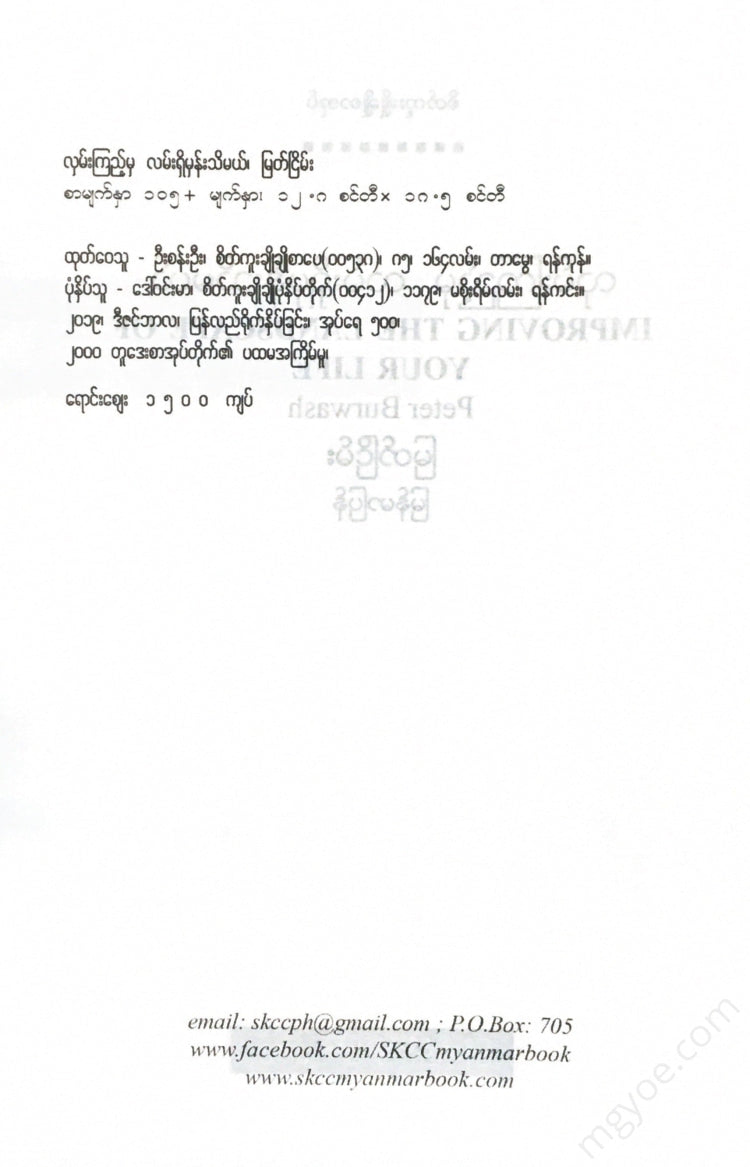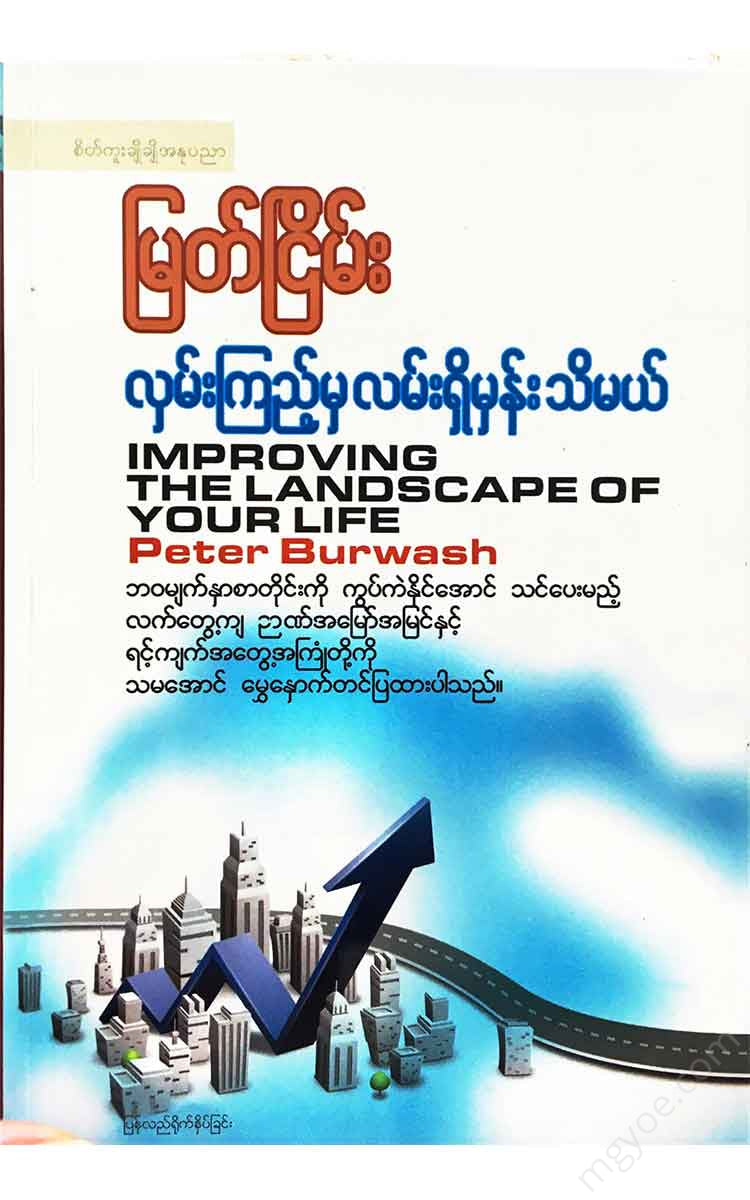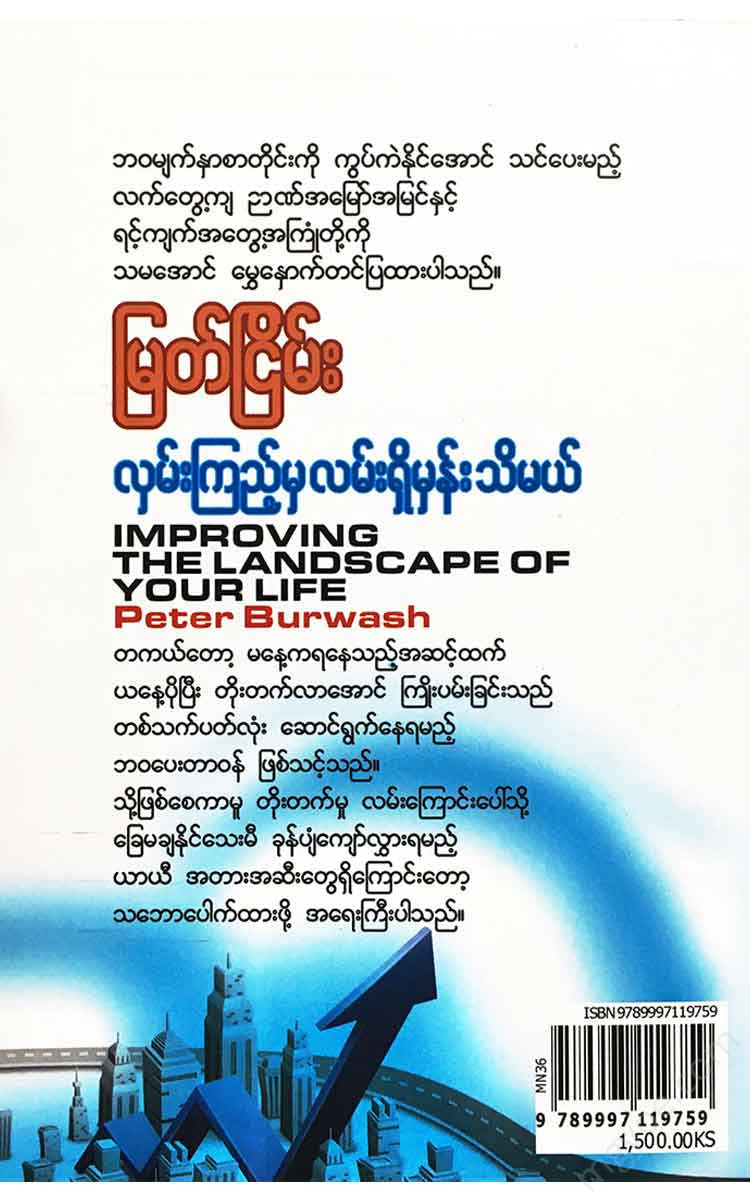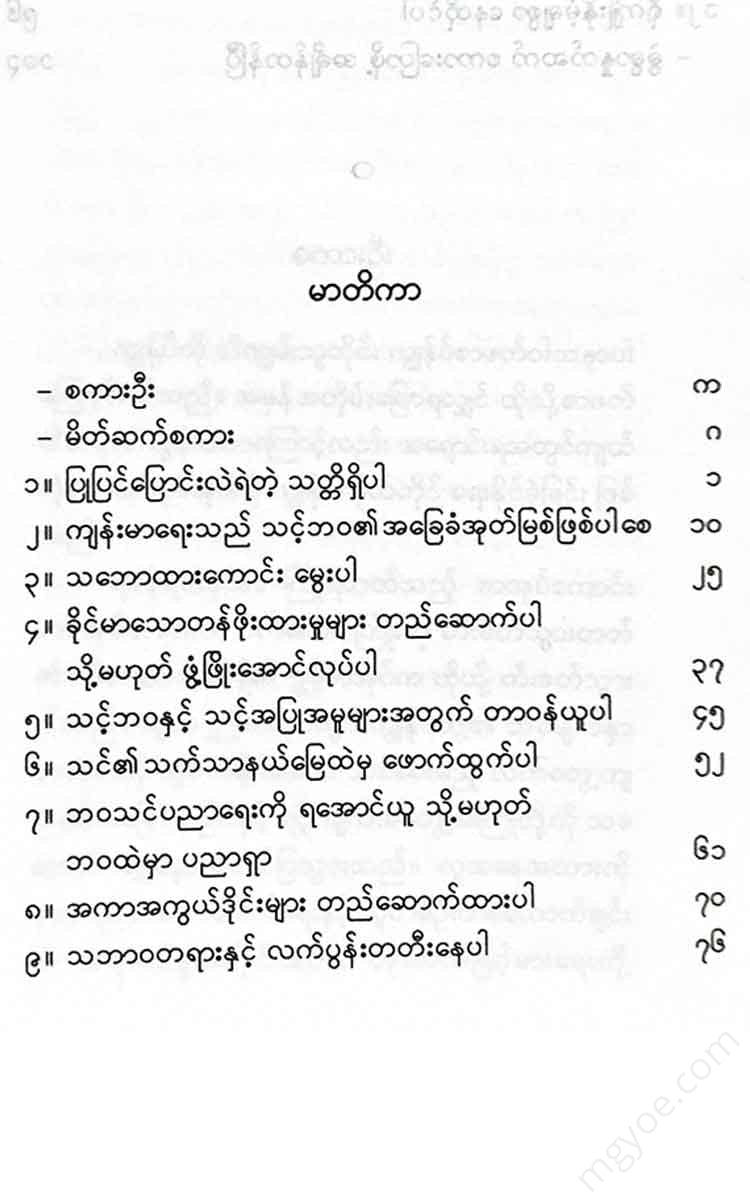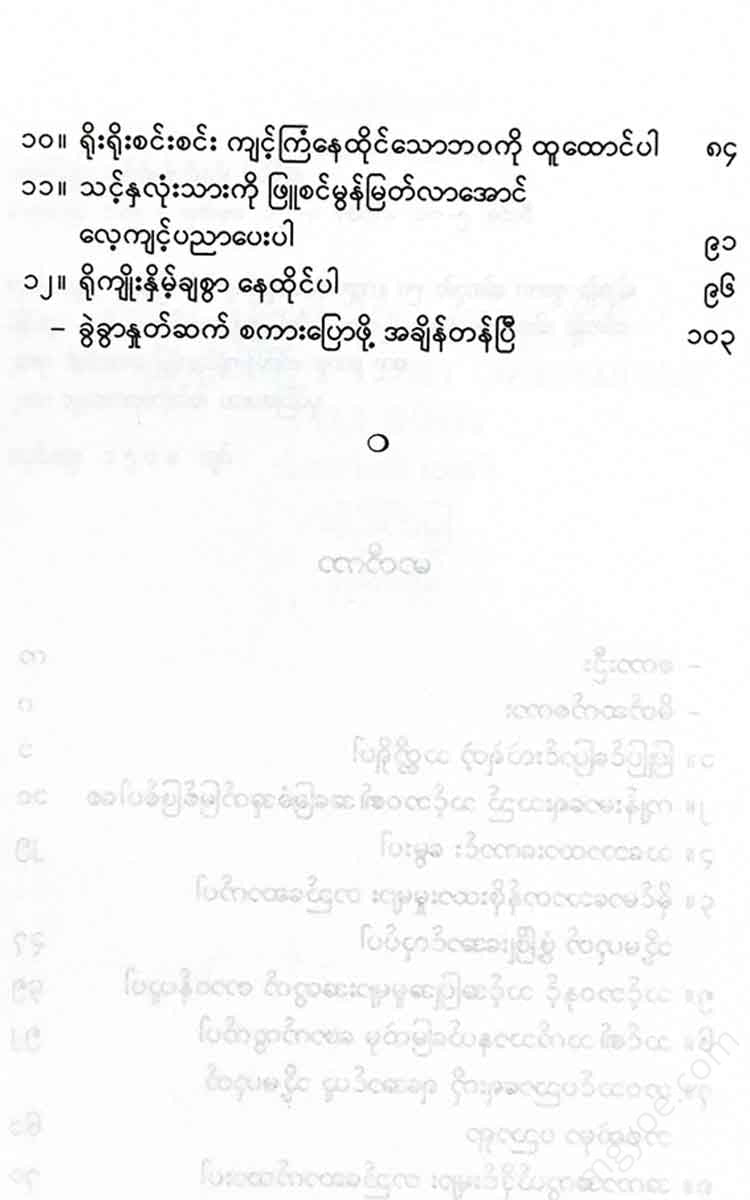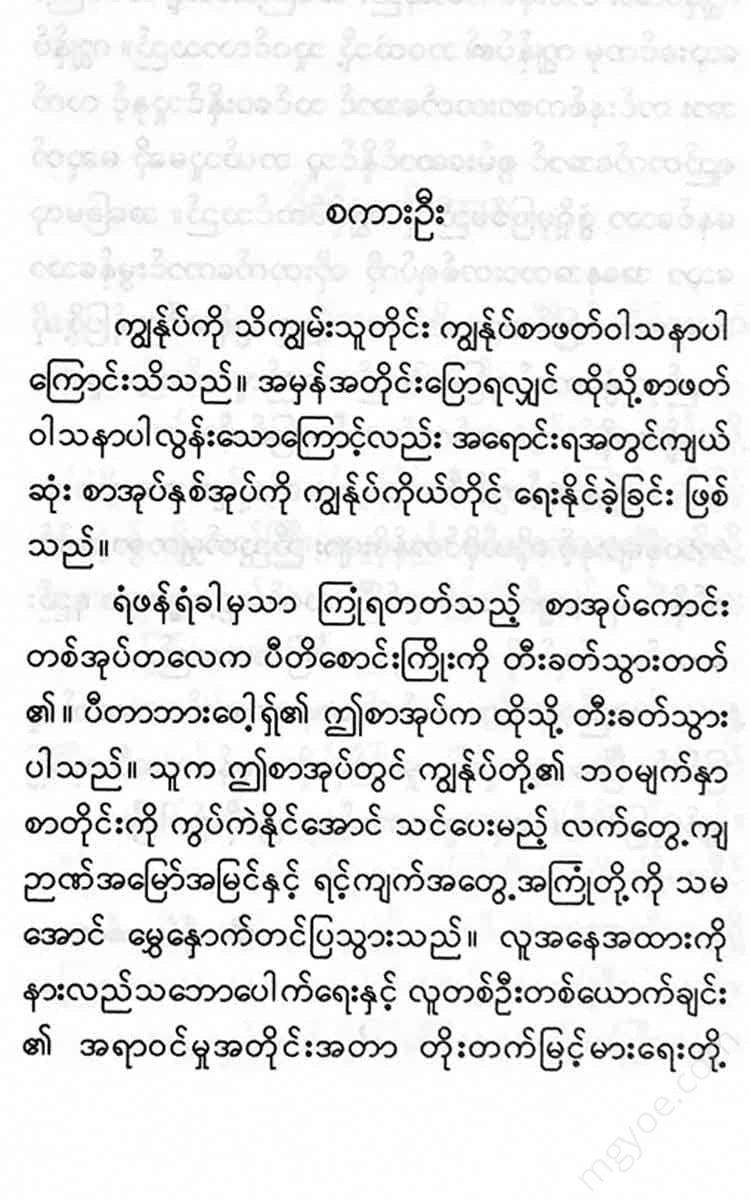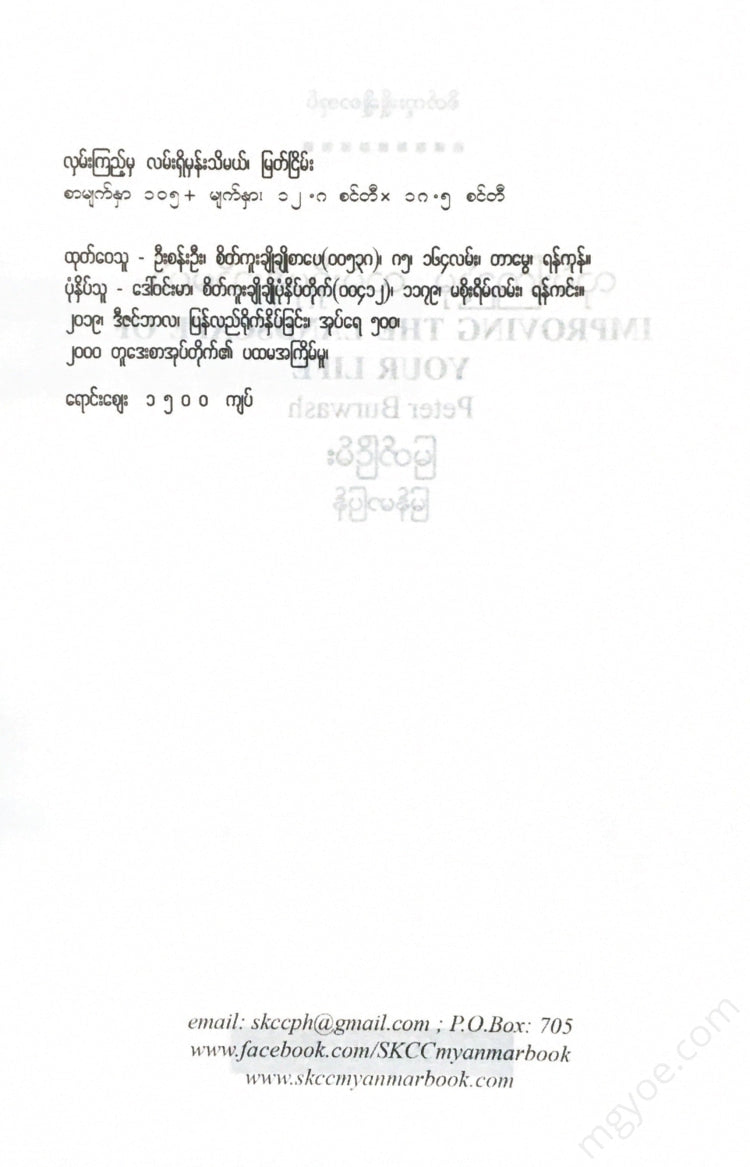စိတ်ကူးချိုချိုစာပေ
Myat Nyein - You will know there is a way when you look.
Myat Nyein - You will know there is a way when you look.
Couldn't load pickup availability
We must be willing to sacrifice our current situation for the sake of our future. It takes courage to make such sacrifices. Whenever you see a company, a country, a family, or an individual successfully make significant changes, you will see that there were courageous decisions that accompanied that success. Everyone who has achieved something can look back at their past. And they can reflect on how, at what point, their life changed course. A key part of that process of development is the courage to change course.
We need to have the courage to look at ourselves and make changes.
Look at the difference between children and adults. Children are full of hopes. They are full of dreams. They believe that when they grow up, they can do anything. They don't have many doubts. (However...as they grow older, they start to question themselves. Their dreams turn into clouds of doubt. Their hopes turn into fears. What factors create this transformation? In many cases, it is because of the disappointments, discouragements, comments, and criticisms that relatives, parents, friends, or teachers have said. If everyone kept a diary and wrote down the times when their dreams and hopes were attacked verbally, and if they surrendered to the negative words of those doubters, there would be no great success stories in this world.
Among all these pessimists, there are always those who understand why you want to make changes, and those who can give you a positive voice. Having such people by your side as your friends or as your assistants will be of immense help to you. However, always remember that the final decision to change the course of your life is yours.
Deciding to reform and develop is the “design” stage. Putting that decision into practice is the “construction” stage. Once the building has been built, it becomes much easier to visualize what it will look like.
Sometimes we are forced into the role of the hero who performed a brave act. But interview someone who saves a drowning person or rescues someone trapped in a burning building. They always say, "It's something everyone would do. I did it too."
They often feel ashamed and embarrassed when they are praised or given the title of hero.
Because they know deep down that they are not truly brave. They are just 'reacting'. They are just doing what everyone else would do.
True courage is like a prisoner in prison. It is the decision of the life-changing moment: whether to remain in prison for life or to be released quickly. True courage is sitting down with yourself and your heart, honestly examining yourself, and making changes to improve your life. Only when you improve your life can you help others improve their lives. True courage is sitting down with your spouse and apologizing for your mistakes.
True courage is the ability to say the words, "I'm sorry," and to feel that emotion with your heart.
True courage is the determination to do what is right, even if it is not the popular course.
Life is not easy. It is human nature to want to take the path of least resistance. If we want our lives to be better and more prosperous, we must have the courage to struggle. We must have the courage to sacrifice and let go. Such courage is absolutely necessary.
The biggest mistake parents made during the Great Depression of the 1930s was to protect their children from the struggles they had experienced. They wanted to make everything easy for their children. (1) After all, we all need the experience of struggle. Suffering reveals a person’s true character.
Let me ask you a question to those who don't have the courage to change their lives. What are you afraid of? You know that your life will be better, that the end result will be better. But you are afraid. Perhaps you are afraid of the process, the struggle.
For example, consider a battered and abused wife. She desperately wants a divorce from her husband. She knows that her life would be better without the physical and emotional abuse. Yet she clings to her abusive husband. Not because she is too attached to him, not because she is too attached to him. But because she is afraid to go through the hardships of life in order to improve her life.
We all have our own “desert” experiences. It refers to times when our lives feel like they are falling apart. The important thing is not to allow ourselves to be stranded in the desert.
If we view struggle and sacrifice as positive actions, that attitude will help us make bolder decisions. Interview people who have been brave enough to change their lives. Almost all of them view the process of change as a character-building experience.
It's often said that the greatest champions in sports have spent years envisioning the final moments that will define their success. So... why don't you do the same? Visualize what the next chapter of your life will look like. Then draw a picture. Or write a paper.
Choose a quiet, peaceful place to sit alone. Take a notebook and a pencil with you. You don't have to be a great writer. You don't have to be a great artist. Write down as much of your "new life" as you can visualize in words. And then visualize it in pictures.
Recently, I gave a talk to a group of sixth graders at an all-girls school. After the talk, their teacher gave them two assignments. The first assignment was to write down the insights they had gained from the talk. The second assignment was to draw a picture to illustrate that insight.
Their hard work was bound into a book and given to me as a gift. I was amazed at how talented and perceptive these students were. However, they were not good at either writing or drawing. Their talent was only in one area.
It is interesting, however, that their writing and their drawings complement each other. They rarely draw what they write, or even draw what they draw. This suggests that their observations are no longer original, but rather diffused, diversified.
